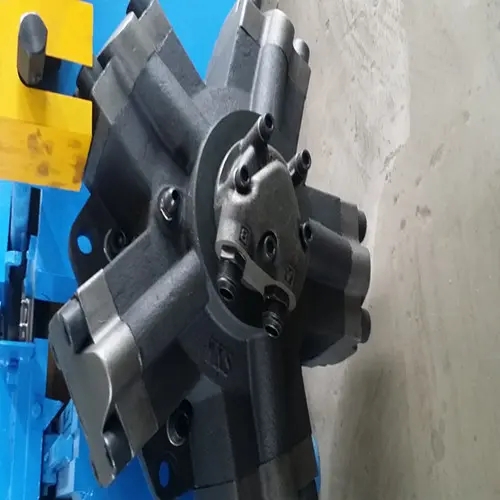
The Manufacturing of Steel Door Frames An Overview of Modern Machinery
In the construction and architectural sectors, steel door frames have become a vital component due to their robustness, durability, and aesthetic appeal. The efficiency and precision involved in the manufacturing of these frames have significantly improved with advancements in technology, leading to a correlation between the machinery used and the quality of the final product. This article explores the various machines involved in the production of steel door frames, showcasing the processes that convert raw materials into finished goods.
Understanding Steel Door Frames
Steel door frames serve as the structural support for doors, providing security and ensuring longevity. Unlike traditional wooden frames, steel frames are less susceptible to warping, cracking, and environmental wear, making them ideal for both residential and commercial applications. The demand for steel door frames has surged, necessitating the need for efficient and high-quality manufacturing processes.
The Role of Machinery in Production
The production of steel door frames begins with the acquisition of steel sheets, which undergo a series of processes to be transformed into usable frames. The machinery involved in this process includes
1. Cutting Machines The first step in manufacturing steel door frames involves cutting the steel sheets into the required dimensions. Modern cutting machines, often CNC (Computer Numerical Control) operated, provide unparalleled precision and speed. This ensures minimal wastage of raw materials and adherence to exact specifications.
2. Bending Machines After cutting, the steel pieces need to be bent into the desired shapes. Hydraulic bending machines are commonly used in this phase. These machines can easily create various angles and curves required for different frame designs. The accuracy of these machines contributes to the overall aesthetics and functionality of the door frames.

3. Welding Machines The integrity of a steel frame relies heavily on the strength of its joints. Welding machines are crucial for joining different sections of the frame together. Automated welding systems ensure that welds are consistent and durable, enhancing the structural integrity of the final product. Moreover, advanced welding techniques can reduce production time while maintaining high quality.
4. Finishing Machines Once the frames are assembled, a series of finishing machines are employed to enhance their appearance and protect them from corrosion. This includes processes such as sanding, priming, and painting. High-quality powder coating machines ensure a uniform finish, which not only improves aesthetics but also increases the lifespan of the frames.
5. Quality Control Equipment Throughout the manufacturing process, quality control is paramount. Machines equipped with sensors and measurement tools assess the dimensions, strength, and surface quality of the frames. This guarantees that only products meeting strict guidelines make it to the market.
The Benefits of Automated Machinery
The integration of automated machinery in the manufacturing of steel door frames has brought about numerous advantages. Automation ensures consistency, reduces human error, and increases production speed, allowing manufacturers to meet high demand levels efficiently. Additionally, modern machines require less manual labor, reducing labor costs and increasing workplace safety.
Conclusion
The manufacturing of steel door frames exemplifies how advanced machinery can transform raw materials into high-quality products. As technology continues to evolve, the processes involved in making steel door frames will likely become even more efficient and sophisticated. Manufacturers who invest in state-of-the-art machinery not only enhance their productivity but also their competitiveness in the market. This synergy between technology and craftsmanship will continue to shape the future of steel door frame production, ensuring they remain an essential fixture in modern construction.